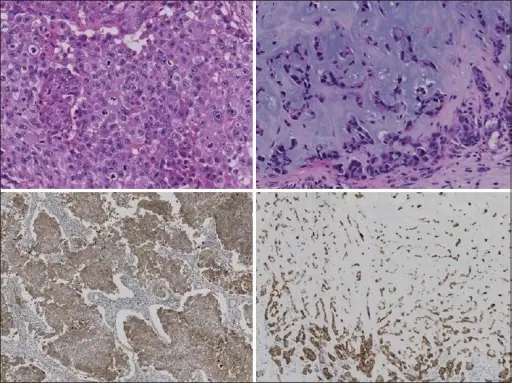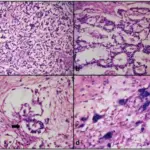Embryonal carcinoma of the ovary is one of the most malignant cancers arising in the ovary and is an aggressive tumor due to its tendency to early hematogenous spread.
What is the Pathology of Ovarian Embryonal Carcinoma?
The pathology of ovarian embryonal carcinoma is:
-Etiology: The cause of ovarian embryonal carcinoma is not clear but genetic and environmental factors are possible factors.
-Genes involved: DNMT3B, DPPA4, GAL, GPC4, POU5F1, and TERF1.
-Pathogenesis: The sequence of events that lead to ovarian embryonal carcinoma is unknown.
-Morphology: The morphology associated with ovarian embryonal carcinoma shows ill-defined masses, smooth or lobulated cut surfaces.
-Histology: The histology associated with ovarian embryonal carcinoma shows solid, tubular, or glandlike, and papillary histological patterns.
How does Ovarian Embryonal Carcinoma Present?
Patients with ovarian embryonal carcinoma typically females at 20-30 years of age. The symptoms, features, and clinical findings associated with ovarian embryonal carcinoma include: abdominal pain, irregular bleeding or dysmenorrhea, vaginal bleeding, abdominal mss and distention.
How is Ovarian Embryonal Carcinoma Diagnosed?
Ovarian embryonal carcinoma is diagnosed by urine tests for β-hCG levels, sonography, ultrasound, Color Doppler imaging, CT scan.
How is Ovarian Embryonal Carcinoma Treated?
Ovarian embryonal carcinoma is treated by: laparotomy and salpingo-oophorectomy, chemotherapy, fertility-sparing surgical treatment.
What is the Prognosis of Ovarian Embryonal Carcinoma?
The prognosis of ovarian embryonal carcinoma is good if treated at early stages. Embryonal carcinoma has the highest rate of lymphovascular invasion and extension into paratesticular tissue.



